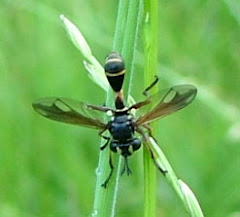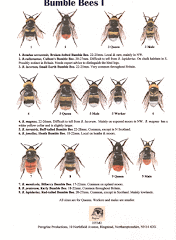Today was a nice warm sunny 1st May. Spent some of the day clearing Alexanders - we have rather a lot of this. I blame the neighbouring arable fields and all the sprays the farmers put on them!
We also moved the cows to a new field. It was nice to see how the botany of these fields has diversified since we got the cows.
The hedges are also looking good and Wilkins Wood starts to look like a wood! Also nice to see some of the wildflowers we have planted becoming more established and coming up for successive years!
Some of our House Martins are back and quite a few Swallows around, so it almost felt springlike. This year we seem to have 2 singing Blackcaps and a singing Chiffchaff, so hopefully we are doing something right.
Increasing numbers of Bumble Bees - hopefully they will pollinate the orchard. Also a few solitary bees including
Andrena bicolor,
Anthrophora plumipes (including a splendid male demonstrating the 'hairy feet' - see Peregrine Productions plate HYM6 Solitary Bees for a picture).
Several butterflies flying - Peacocks, Speckled Wood, Large White, Small Tortoiseshell.
A Peacock, Inachis io.
In the pond, there were a few Whirligigs.Also plenty of Smooth Newts courting and mating - nice to see through the clear water.
We are keeping a close eye on the Barn Owl nest-box. A female Barn Owl flew out of it the other evening. Though I am not too optimistic, as the Stock Doves still seem to be using it.









